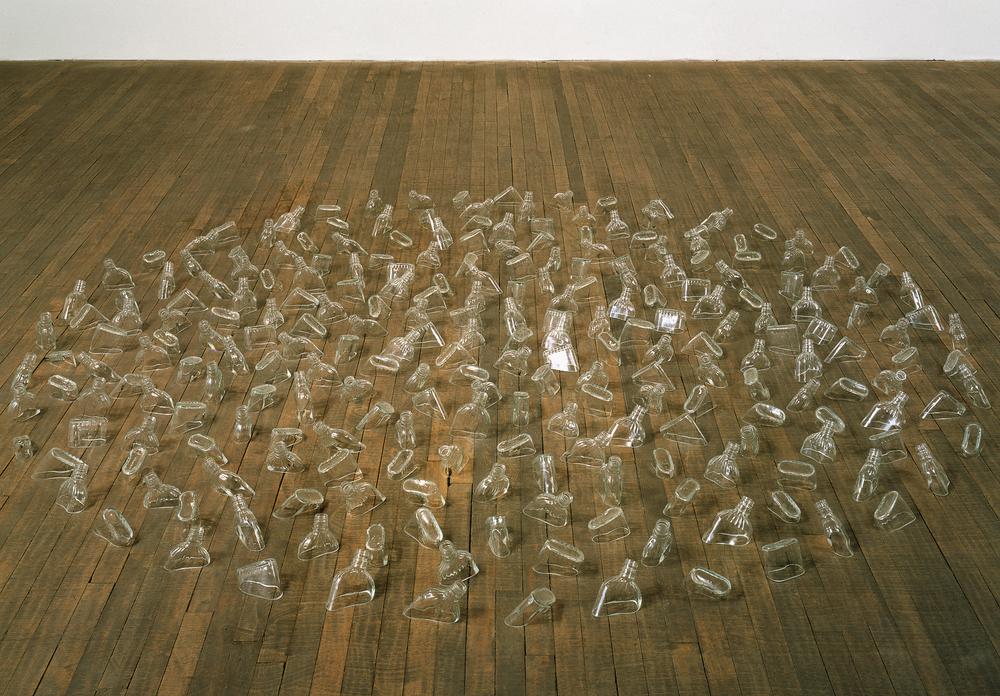Mona Hatoum. Nothing Stable

Mona Hatoum resists filtering her work through the facts of her origin story. Though her studio is in London, she is a kind of transnational artist who makes work around the world. She is attracted to the contexts and materials of a specific place like “the local street market, a snippet of conversation, a certain local material or local craft,” so her materials are varied, and her practice defies a certain stability.1 Hatoum created Drowning Sorrows (2001–02) during a residency in Caracas, Venezuela. She collected the flask-like glass bottles of locally made liquor, cut them at various angles, and arranged them in a circular pattern on the floor.2 The bottles appear as if they are floating or bobbing in water, suggestive of a liquid floor—as though the bottom has truly fallen out.